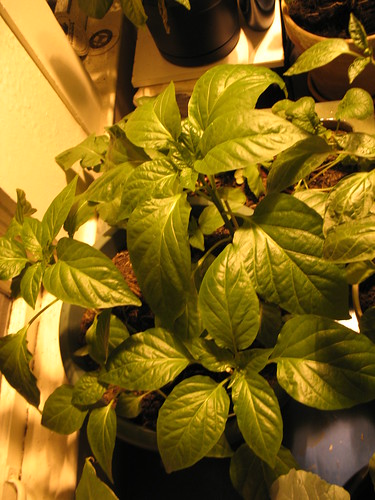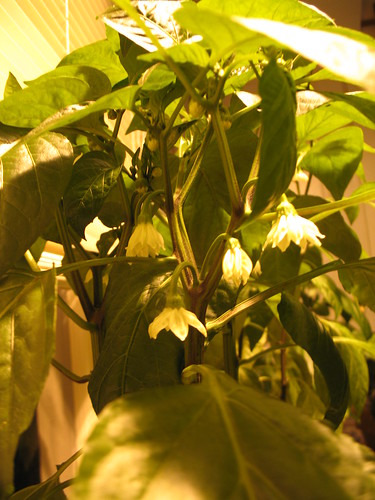In answering this question I'd like to start by saying the right fertilizer will always be organic. Products such as "Miracle Grow" should never be used for an indoor garden for many reasons. The most important of which is the health of everyone living in your house. By using chemical fertilizers on your plants you're also introducing them to the environment in which you live. These are also plants that you will one day be eating, so it's kind of a double whammy. There is also nothing synthetic fertilizers can do that organics can't. Remember that everything you're growing has grown wild at some point through natural fertilization.
When looking at fertilizers you will notice that they all have a number. This number is three digits usually separated by dashes (example 6-4-4). The first number is going to be the ratio of Nitrogen. The second is Phosphorous. The final number is Potassium.
 Nitrogen:
Nitrogen: Nitrogen helps in the production of leafy, green growth. This is good for early development growth, but there are down sides. Too much nitrogen and your plants will struggle to flower and hence produce. Too much nitrogen can lead to extreme "burns" on our plants. These "burns" will appear as brown colorizations appearing on the leaves of the plant.
 Phosphorous:
Phosphorous:Phosphorous is used for root development and to promote healthy flowering and fruiting. Once your plants have started to produce flower you should be considering a higher dosage of Phosphorous. Too much phosphorous can prevent the plant from absorbing other essential micro nutrients.
 Potassium:
Potassium: Potassium is what will give your plants more girth. Its used to strength the stalks and also increase resistances to heat and disease. Don't neglect your potassium, as it can lead to plants that are too weak to support their full growth. However if you use too much it will result in a "burn".
As you can see it's a delicate line that you must follow when fertilizing your plants. Too much and you'll have burns. Too little and your plant won't be getting the nutrients that it needs. Being as fertilizing your indoor garden is a must I recommend that you start off with low levels in order to see how your plants react. Then slowly increase one of the nutrients to see how they respond. This can easily be achieved by using products that are nutrient specific as opposed to a premixed formula. Once you find the appropriate ratios you can then look for a mixture that will suit your needs.

No comments:
Post a Comment